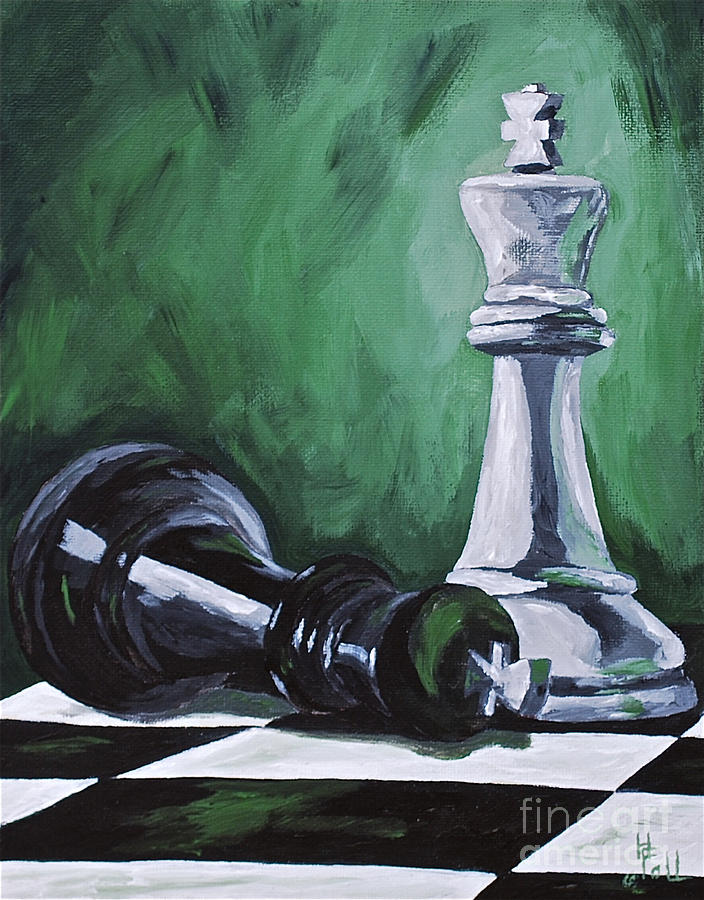
The one more move painting, also known as the Retzsch “Checkmate” painting, depicts a young man playing chess against the devil. See also GM Anish Giri Appointed New CEO of What Is The Story Of The One More Move Painting? Regardless of its title, “Checkmate” remains a beloved and significant artwork in the Louvre’s collection. While the validity of the legend cannot be confirmed, it adds an interesting anecdote to the history of the painting. After spending hours examining the painting, he declared that it was wrongly titled and requested to speak to the curator and the artist. However, there is a legend associated with the painting that suggests a chess champion once visited the museum and was captivated by the artwork.

The painting has become an iconic piece in the Louvre museum, attracting visitors from all over the world.

The painting is knwn for its intricate details and realistic portrayal of the game, with the players’ facial expressions and body language adding to the overall narrative of the artwork. It depicts a game of chess between two people, with one player being in a state of defeat, signified by the fallen king piece on the board. The painting titled “Checkmate” is a masterpiece created by the artist, Sir John Everett Millais, in 1873. What Is The Story Of The Picture Checkmate In The Louvre? The Checkmate painting has gained popularity over the years and has been featured in various exhibitions and art publications, solidifying Webb’s place in the art world. The painting itself is a notable work of art, depicting a dramatic scene of two chess players engaged in a game, with one player appearing to be victorious. This information has been documented by various sources and is widely accepted within the art community. The artist of the Checkmate painting is Charles Meer Webb, a British painter.

Who Is The Artist Of The Checkmate Painting? “Checkmate” is a thought-provoking work of art that invites viewers to contemplate the eternal struggle between good and evil. The painting’s dark, ominous tones and detailed imagery contribute to its eerie and unsettling atmosphere. The use of chess as a metaphor for life and death is a common theme in art and literature, and “Checkmate” is a powerful example of this tradition. The painting is often interpreted as a warning against the dangers of succumbing to temptation and falling into the clutches of evil. The stakes of the game are high, as Satan has wagered the man’s soul on the outcome. The painting serves as a metaphor for the struggle between good and evil, with Satan representing the forces of darkness and the man representing humanity. The “Checkmate” painting depicts a game of chess beween Satan and a man who appears to be losing. Its depiction of a game of chess between Satan and a human player is both haunting and intriguing, and its legend continues to captivate viewers to this day. The Checkmate painting is a fascinating piece of art that speaks to the human struggle between good and evil. Its intricate details and symbolism make it a popular work of art for art enthusiasts and chess players alike. The Checkmate painting is a haunting depiction of the battle between good and evil, and the consequences of losing to the devil. It is said that a famous chess player saw the painting in a museum and examined the chess piece positions, discovering that the man could have made one more move before losing the game.

However, some chess experts have noted that the man’s position on the board is not entirely hopeless. The painting’s title, Checkmate, implies that the man has lost the game and his soul to Satan. He stood over the painting for what seemed hours to his companion, only for him to proclaim, “Get me the curator, the artist, the painting is wrongly titled.” Legend has it that a chess champion once visited the Louvre and was captivated by the Checkmate painting. The painting’s details are creepy, and it is said that if Satan wins the game, he wins the man’s soul. The Checkmate painting, created by Charles Meer Webb in Great Britain, depicts a game of chess btween Satan and a human player.


 0 kommentar(er)
0 kommentar(er)
